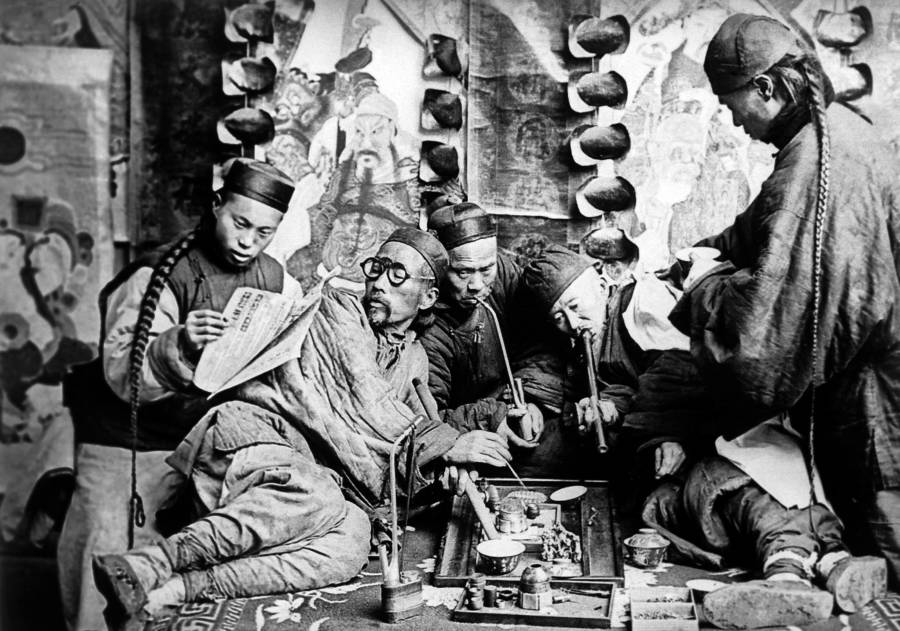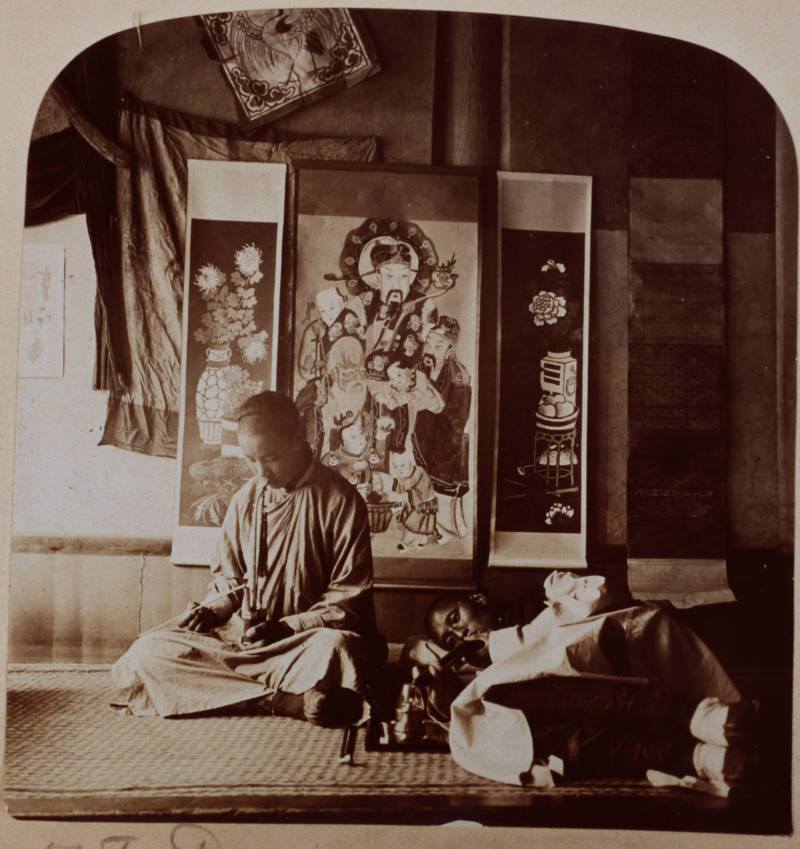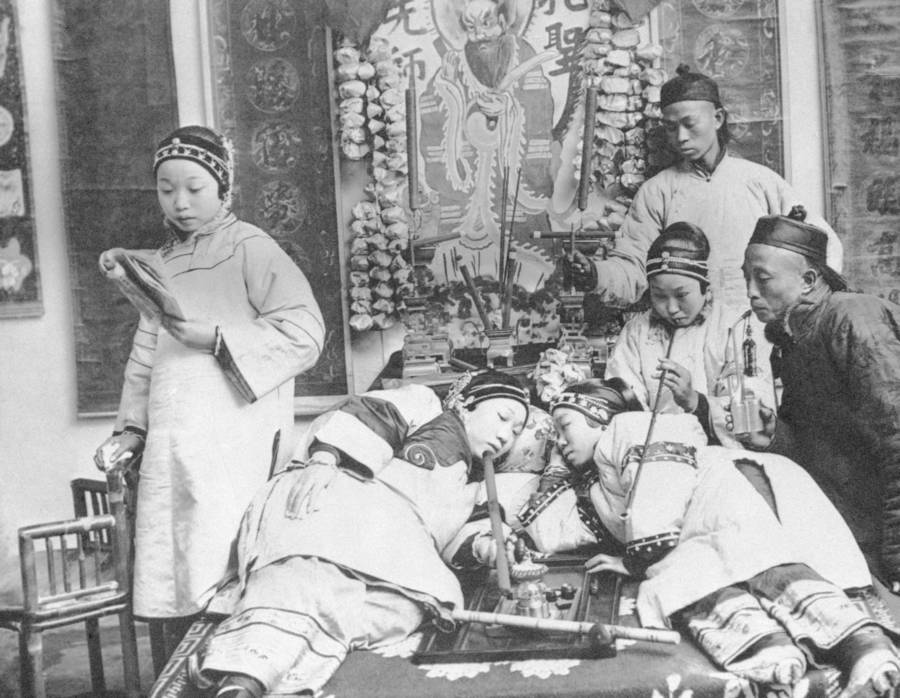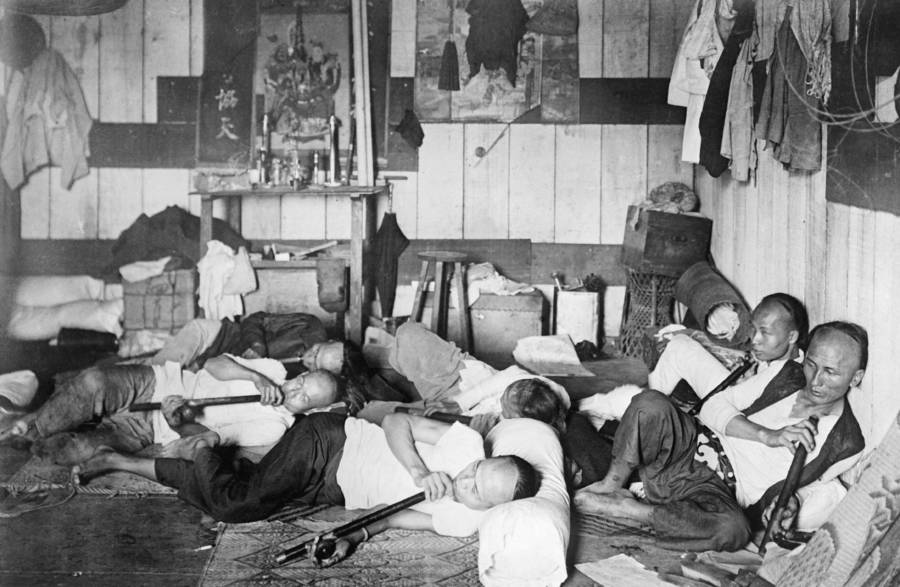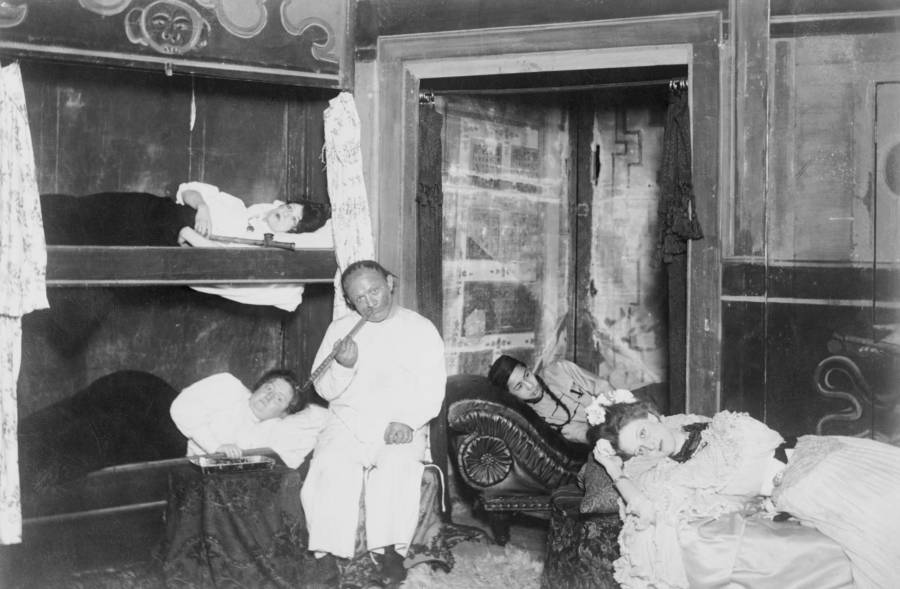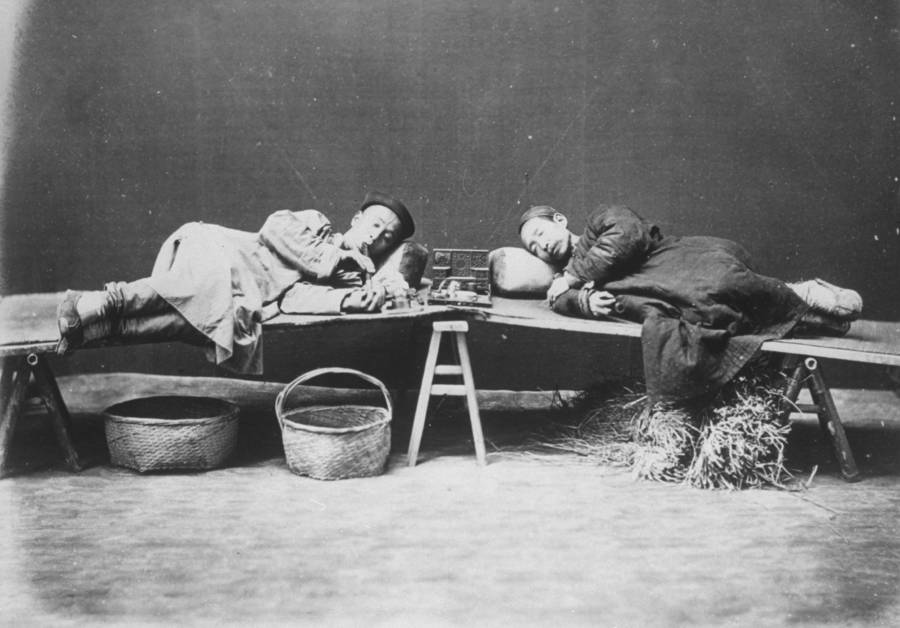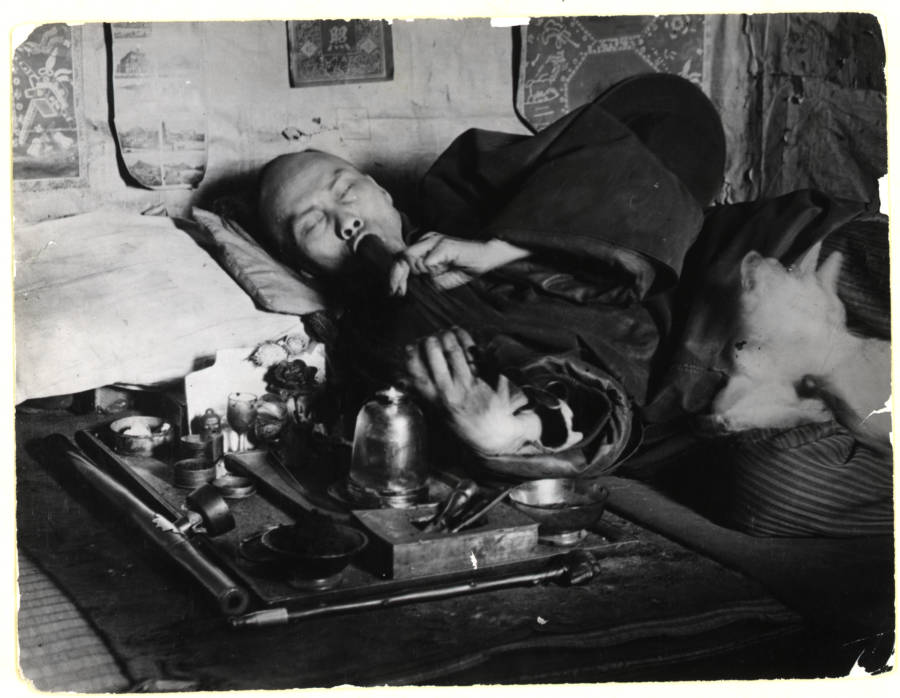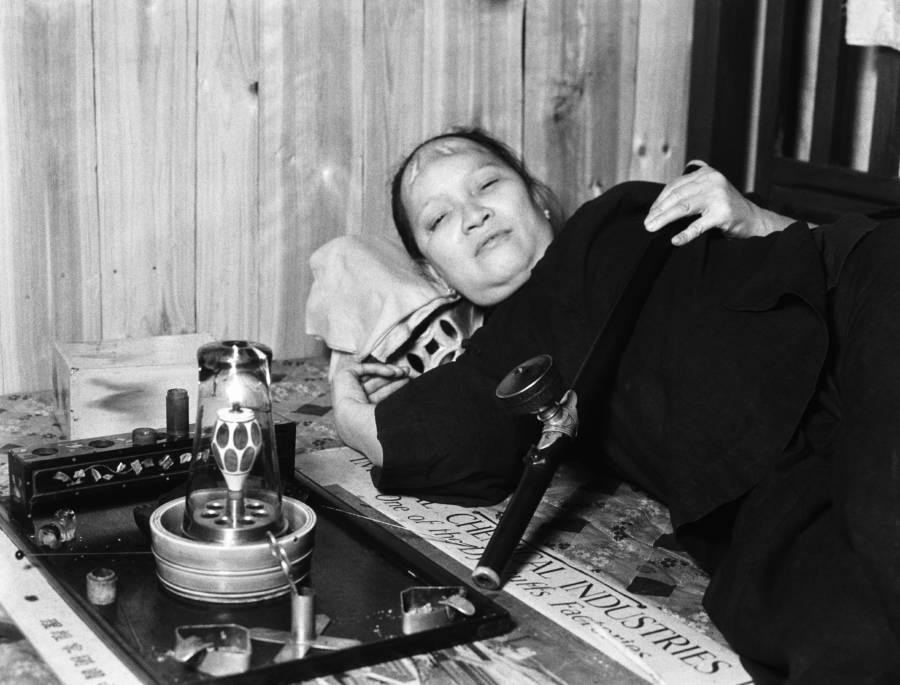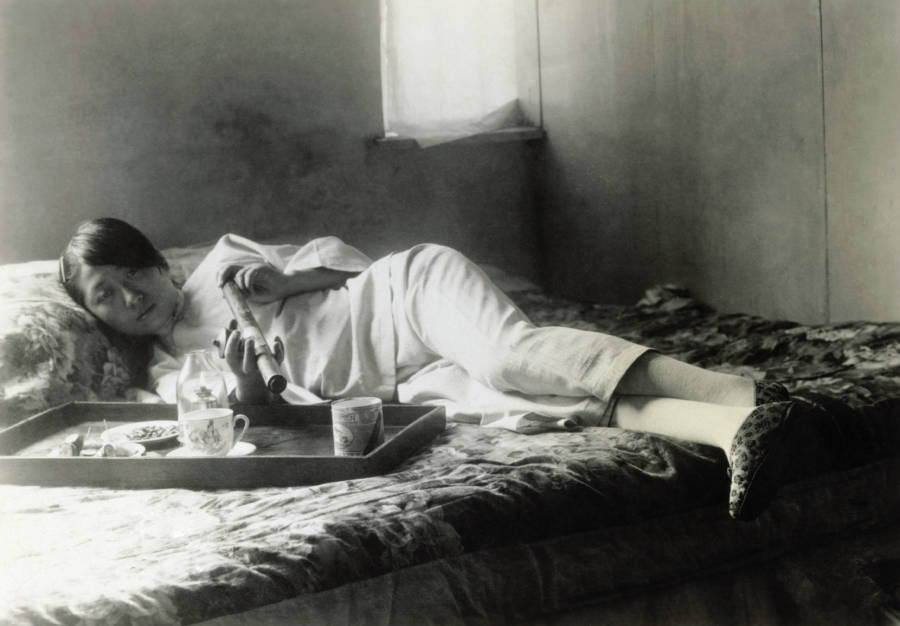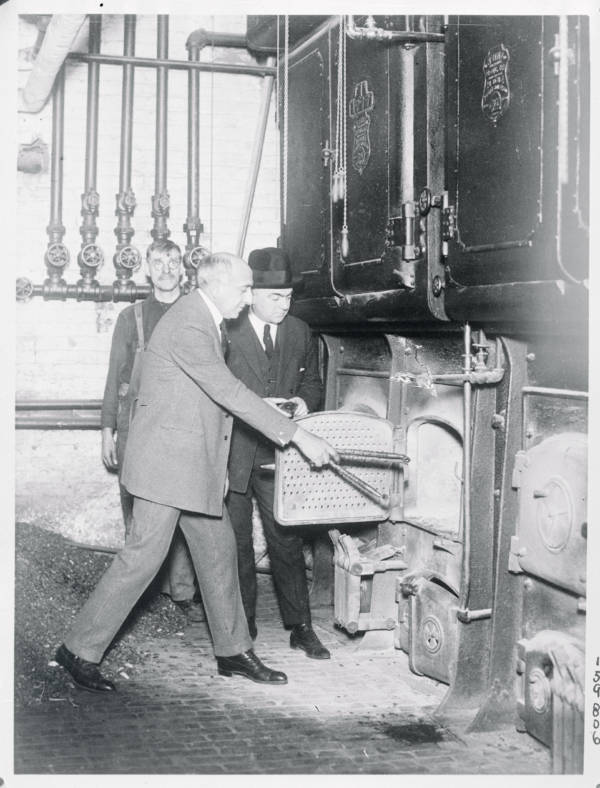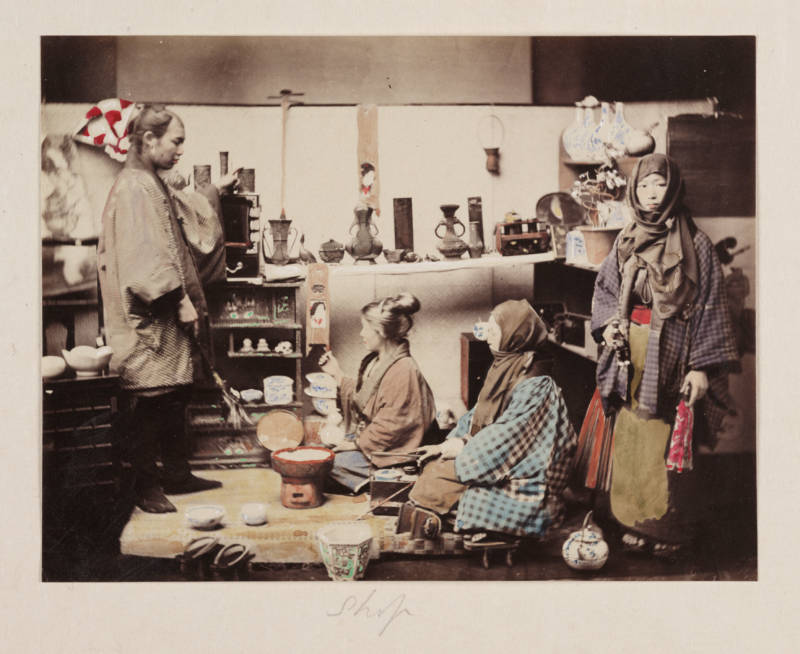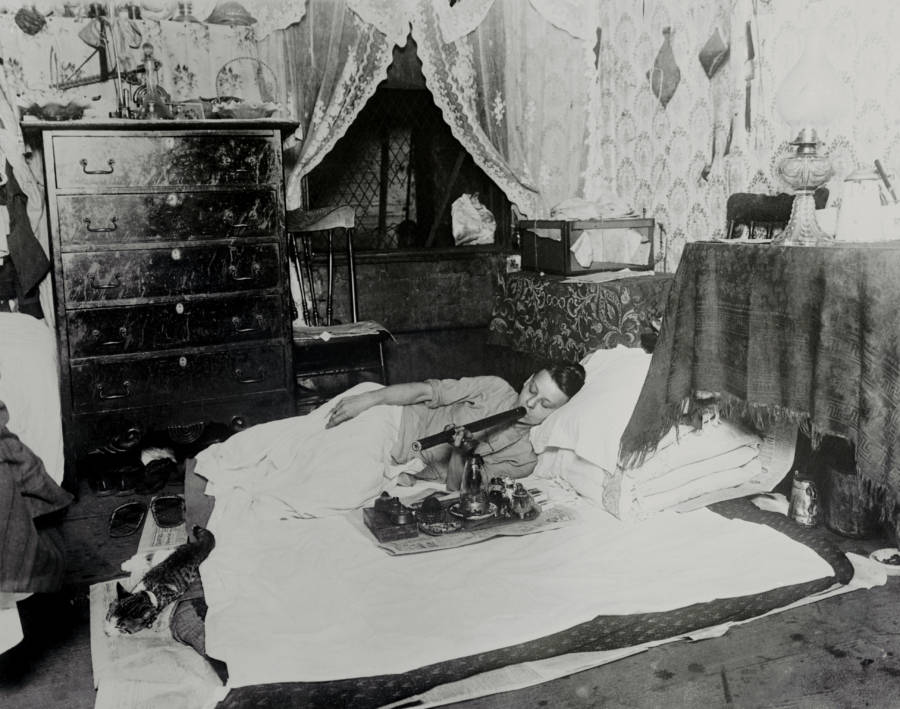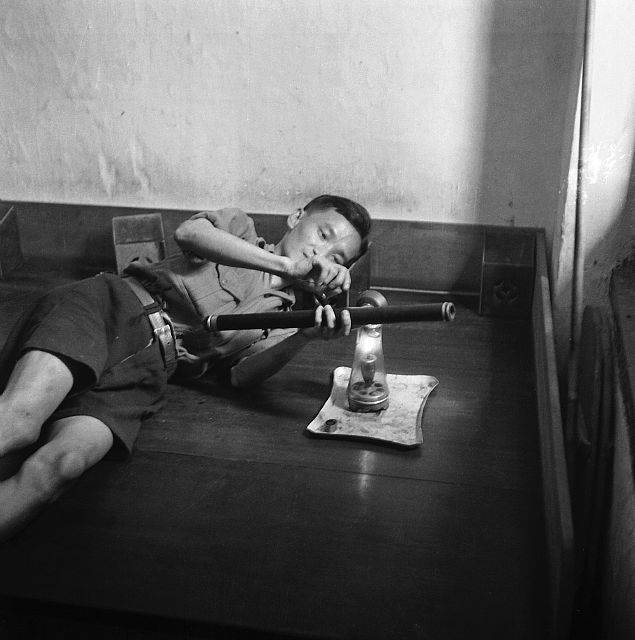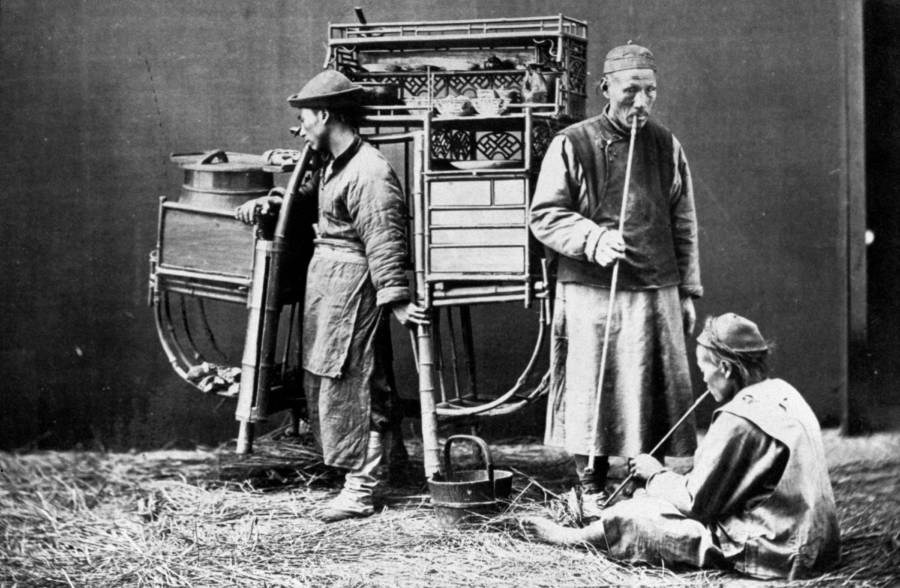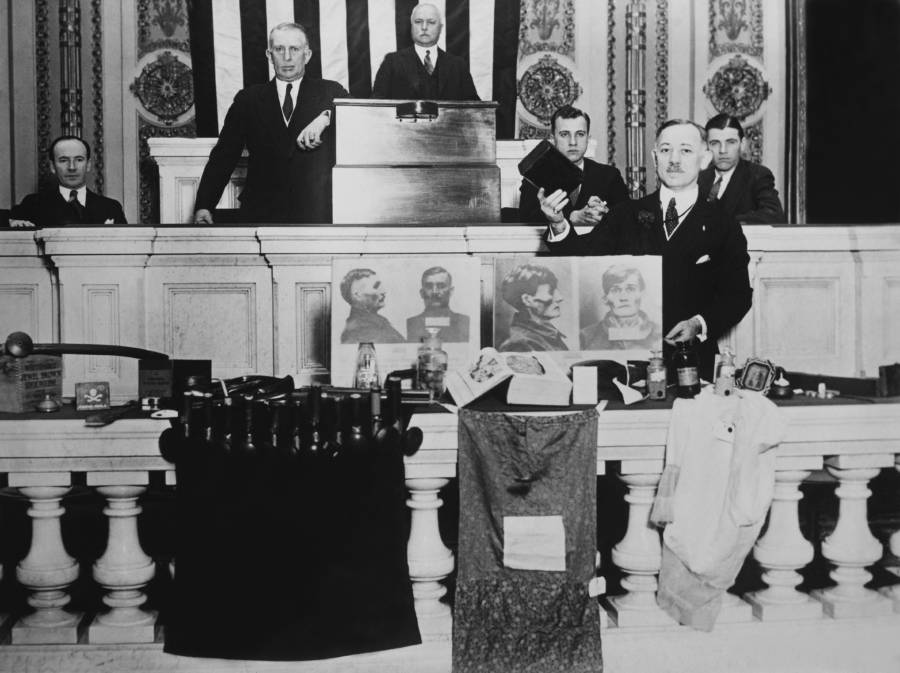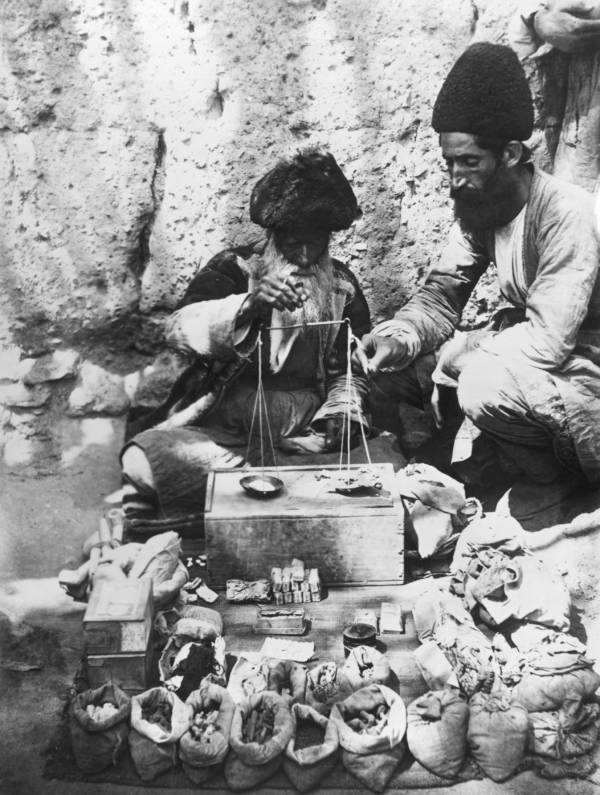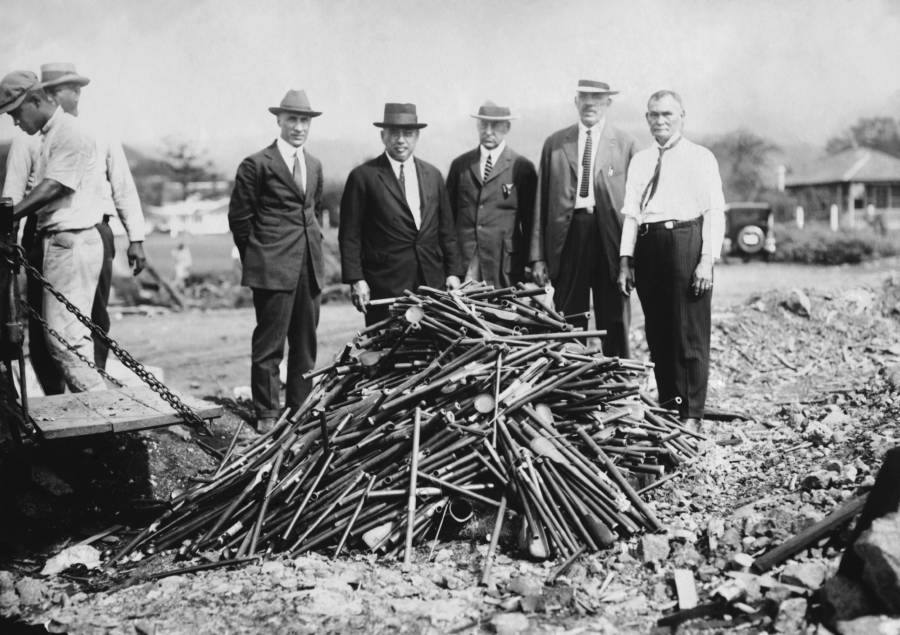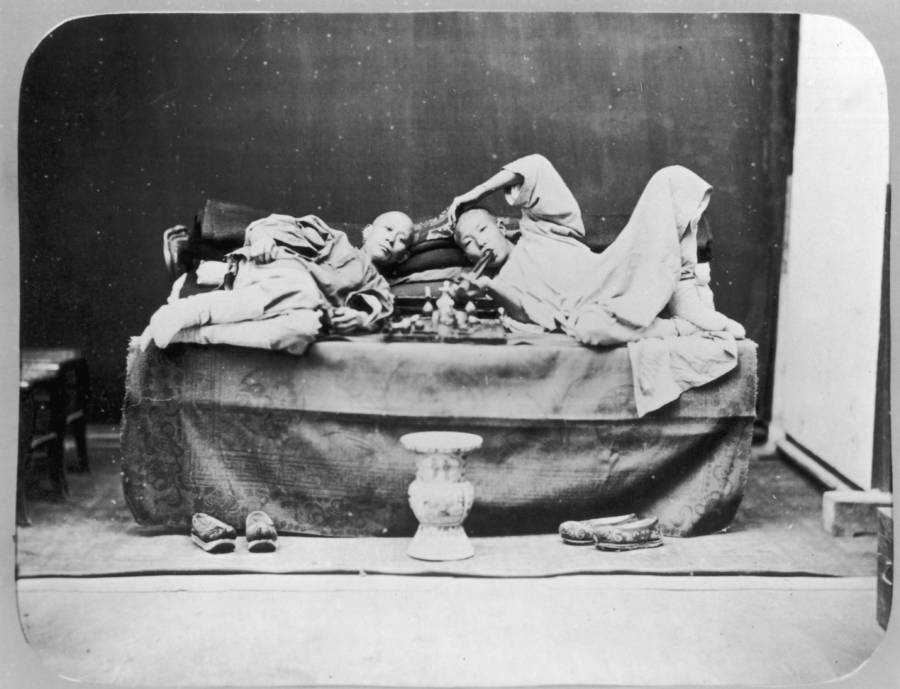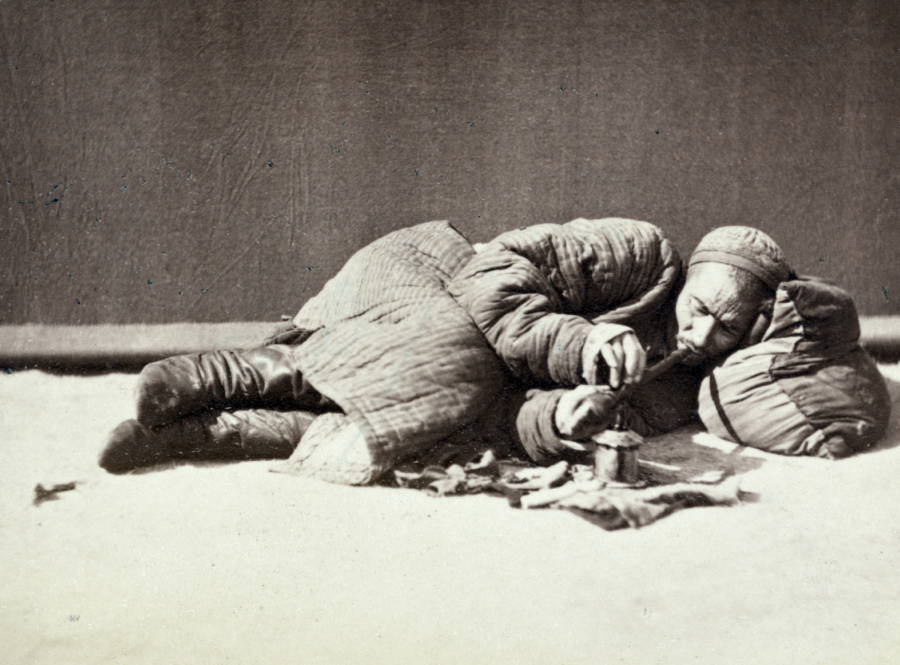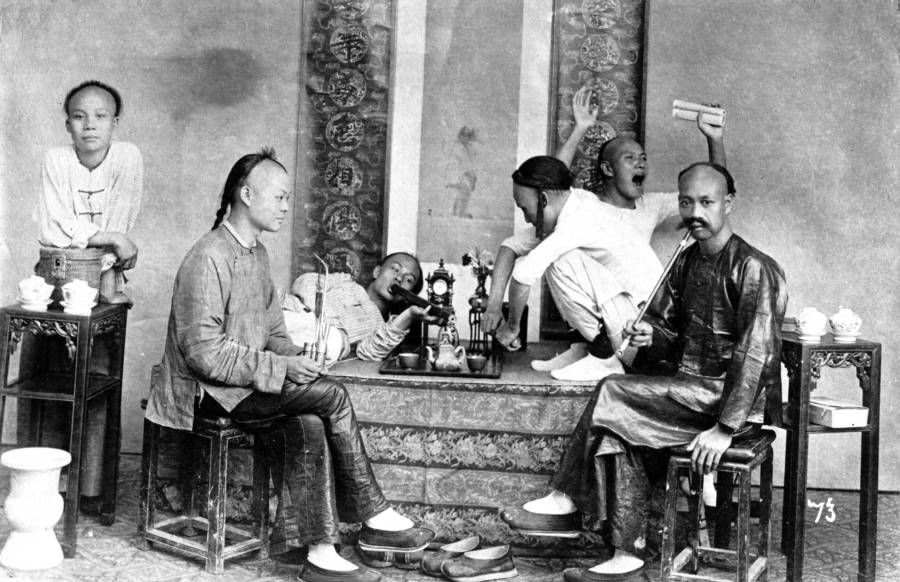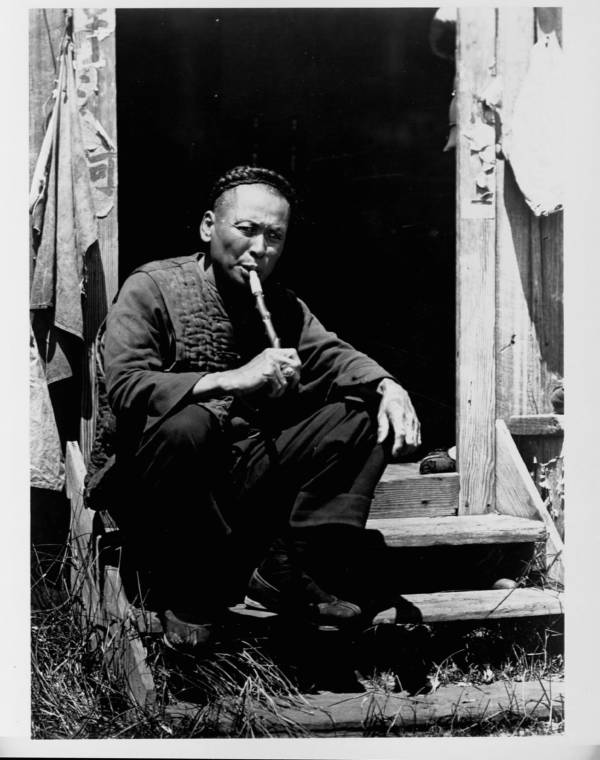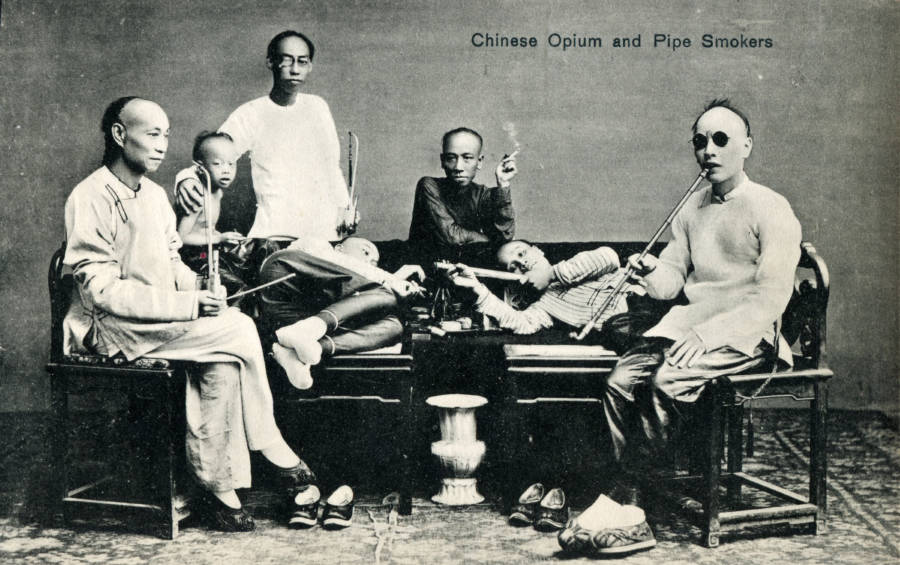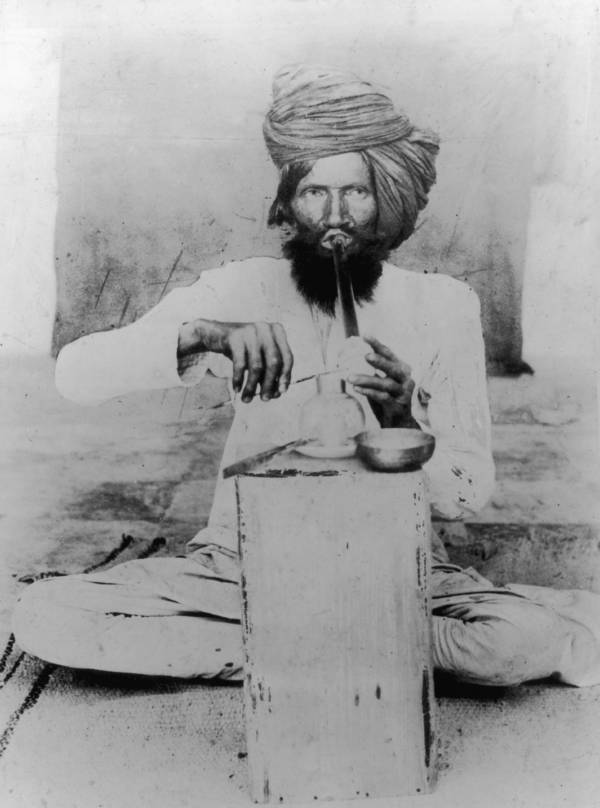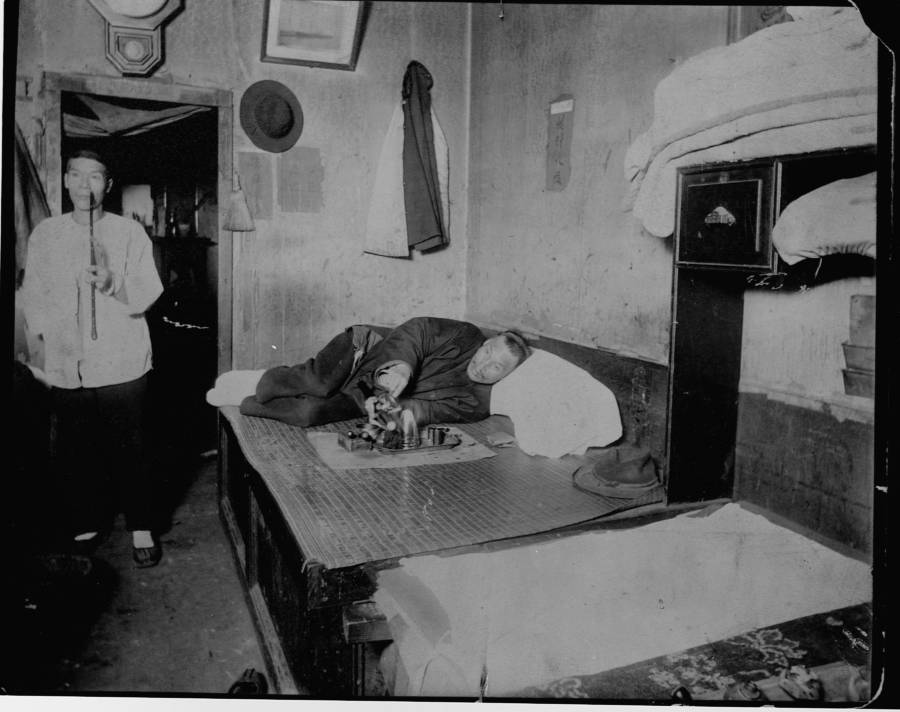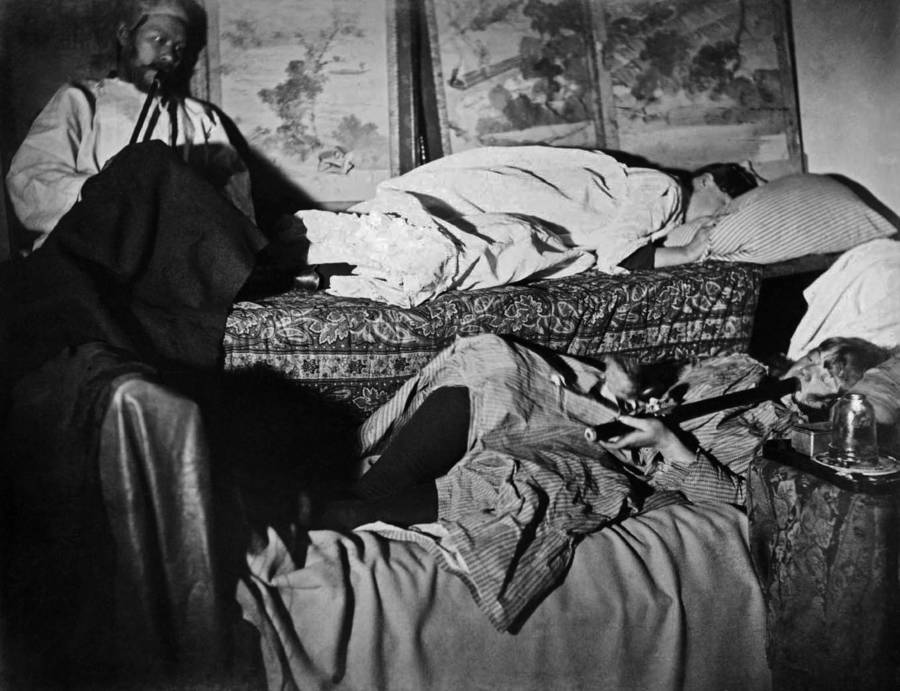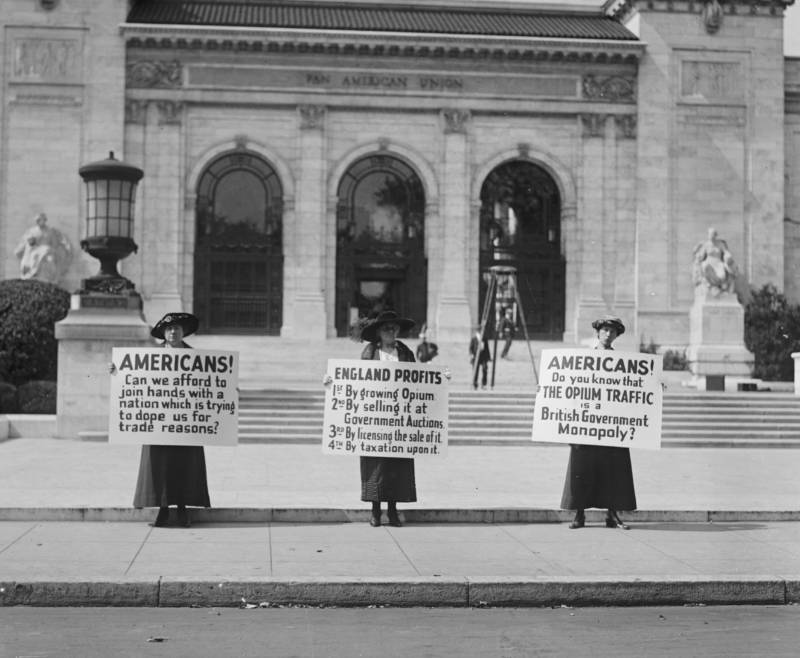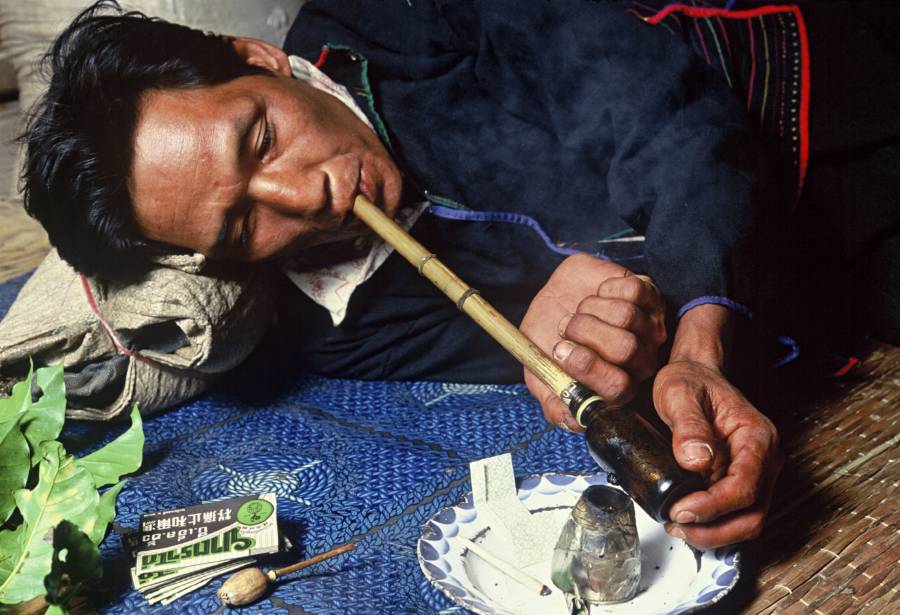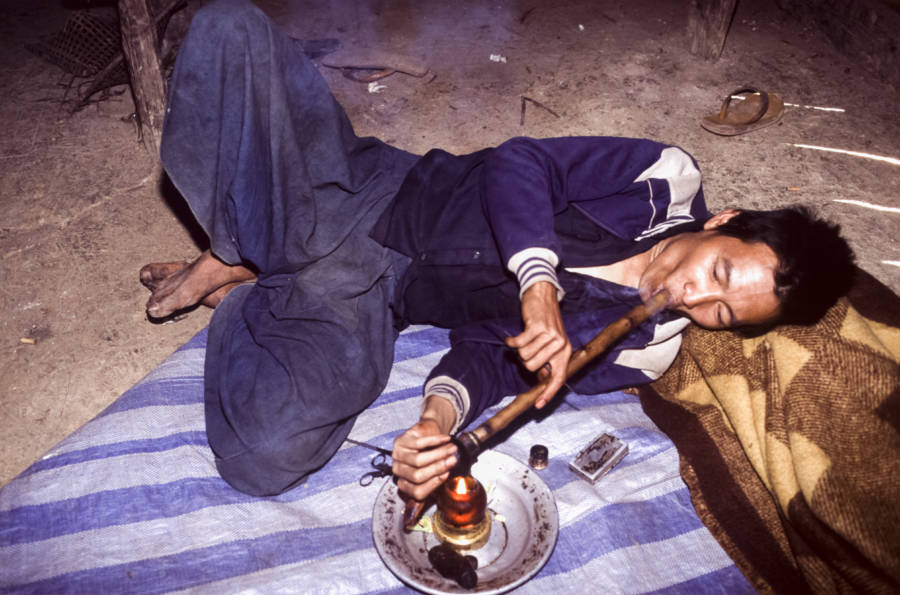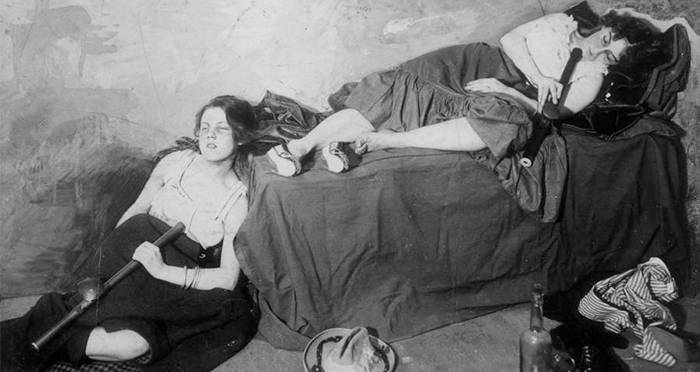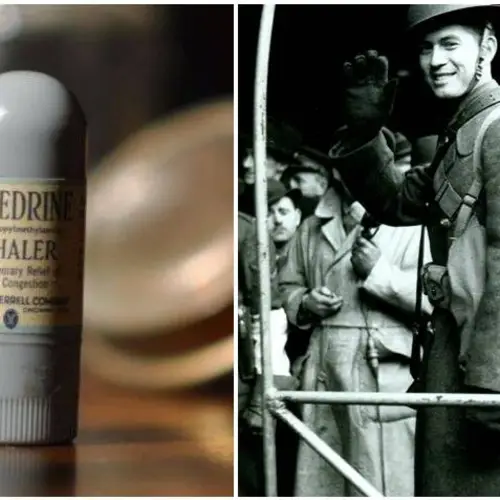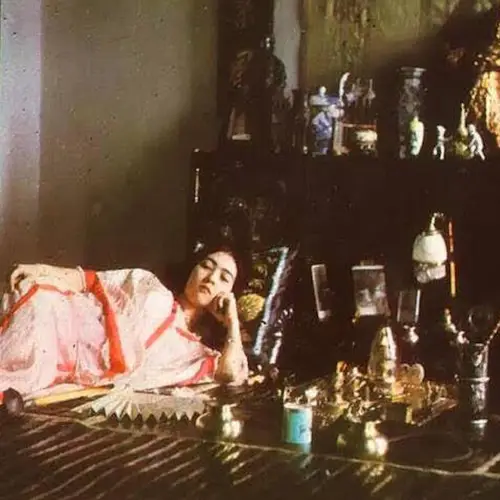Opium dens first sprung up in the Chinatown district of San Francisco in the 19th century. While they were eventually outlawed, these lounge-like establishments flourished across the West for close to a century.
In the late 19th century, the United States had just endured the horrors of civil war and America was still very much finding its footing as the bastion of morality and justice it aimed to be. But soon, a new enemy entered the field — the drug opium, and the so-called "opium dens" where it was consumed.
While most of us are more familiar with the modern-day war on drugs, you would be surprised to discover that the late 1880s struggled with many of those same social concerns.
But these concerns centered on Chinese immigrants and the opium-smoking habit they brought to the United States.
In these 48 images taken inside opium dens across the world in the 19th and early 20th centuries, the scenery and atmosphere are palpable. Before color photography was standardized and the Great War broke out, opium dens pervaded China, the United States, and many other parts of the world.
Chinese Migration And New Opium Dens
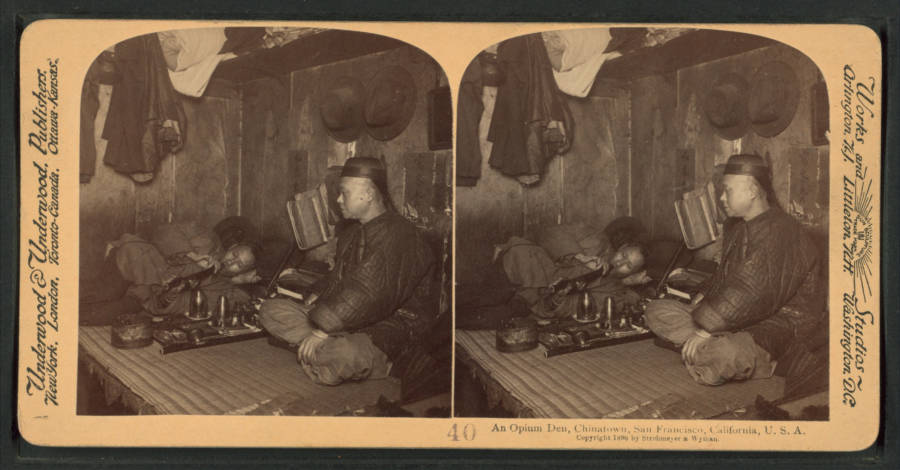
Wikimedia CommonsA San Francisco opium den. Circa 1860-1900.
The first major wave of Chinese immigration to the United States occurred in the 1850s. Keen on leaving their homeland's economic hurdles behind, thousands of Chinese migrants found themselves in the land of opportunity where they did anything they could to brighten their fortunes.
Some came for California's Gold Rush while others settled for railroad work. Some even started businesses of their own. Among this last group, one peculiar business option was opium dens — places where the drug could be sold and smoked. Although opium was an entirely new drug in the United States, the Chinese quickly developed a wide user base.
Initially, the use of opium was a strictly Chinese habit that some immigrants brought with them when they first came to the United States in the 1840s and 1850s. However, it quickly spread in popularity even among America's most respectable citizens.
According to the DailyMail, these resourceful new citizens quickly took advantage of opium's legal status in the United States. The drug could be purchased in five-ounce rations for around eight dollars and was easily found in San Francisco and California even after both governments banned it in 1878 and 1881, respectively.
America's first real crackdown on drugs was entirely rooted in the growing popularity of Chinese opium dens. With reclining bunk beds, attentive servants, and a generally pleasant lounge atmosphere, these establishments gave opium users the space they needed to properly enjoy their new vice.
Far from only selling the drug, these opium dens made sure to provide their customers with all the necessary equipment to consume it — namely, the traditional pipes, hookah-like bases, and a variety of tins.
As most Chinese immigrants of the time actively chose California as their destination, it's not surprising that America's first opium dens sprang up in San Francisco's burgeoning Chinatown district.
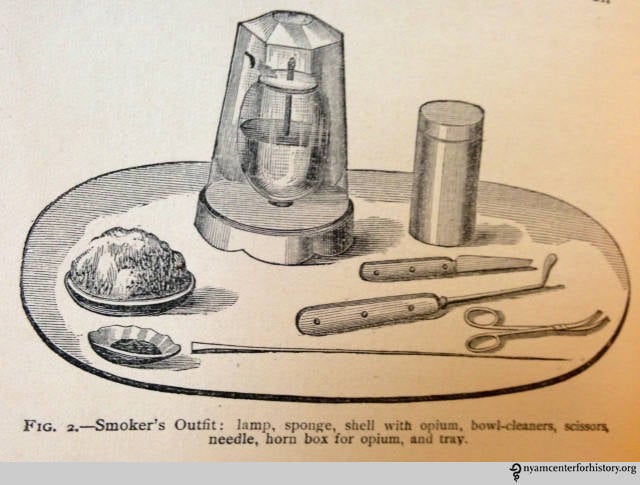
New York Historical SocietyA diagram of Harry Hubbell Kane's 1881 book, Opium-Smoking In America And China.
At a time when the Temperance Movement made Americans hesitant to regularly consume alcohol for fear of its negative health and social consequences, opium dens seemed like an especially attractive option.
When an undercover reporter for San Francisco's The Examiner investigated a local opium den for herself in 1882, she was taken aback by how casual and pervasive the drug had become. She was even more appalled by the sophisticated backgrounds of the drug users she came across.
"Two white girls, neither of whom were over 17 years of age, dressed in clothes usually reserved for a Sunday picnic," she wrote. The experience made her realize just how commonplace the new drug had become.
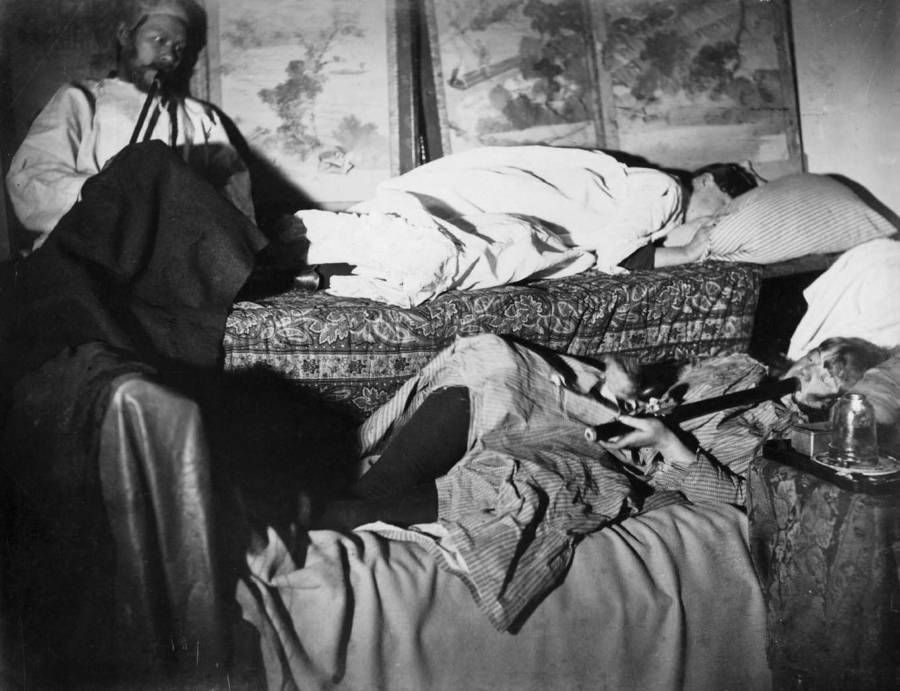
Wikimedia CommonsWhite women in a San Francisco opium den. Circa 1885-1895.
America's First War On Drugs
The use of opium in the United States reached its peak around the 1880s and 1890s, drumming up hefty criticism from concerned American families and politicians alike. One of the results was the passing of the Chinese Exclusion Act in 1882, which not only prohibited Chinese laborers from immigrating to the United States but also banned all opium imports.
Then there was the Pure Food and Drug Act of 1906 which made it more difficult to allow such drugs and medicines as opium to enter the country. The Act was a direct precedent for the eventual creation of the Food and Drug Administration (FDA).
Aware of the dangers of opium and other drugs, the federal government under Theodore Roosevelt demanded that any "dangerous" or "addictive" drugs be labeled as such.
It didn't seem to matter that by the 20th-century opium dens had been outlawed as its illegal use was still very much rampant in Chinatowns on both coasts of the United States. On February 9, 1909, however, Congress passed the Smoking Opium Exclusion Act, which not only banned the import of opium, but also its possession and use.
Interestingly enough, however, this law only applied to the Chinese opium made for smoking and not the medicinal opium that was increasingly being used by white Americans.
As such, this legislation can be seen as not only a way of fighting a new, exotic drug, but also an expression of anti-Chinese sentiment in the U.S. Indeed, the idea of the Chinese men perverting the nation's innocent white women into consuming dangerous drugs in dingy, shadowy dens, was a popular notion in these years.
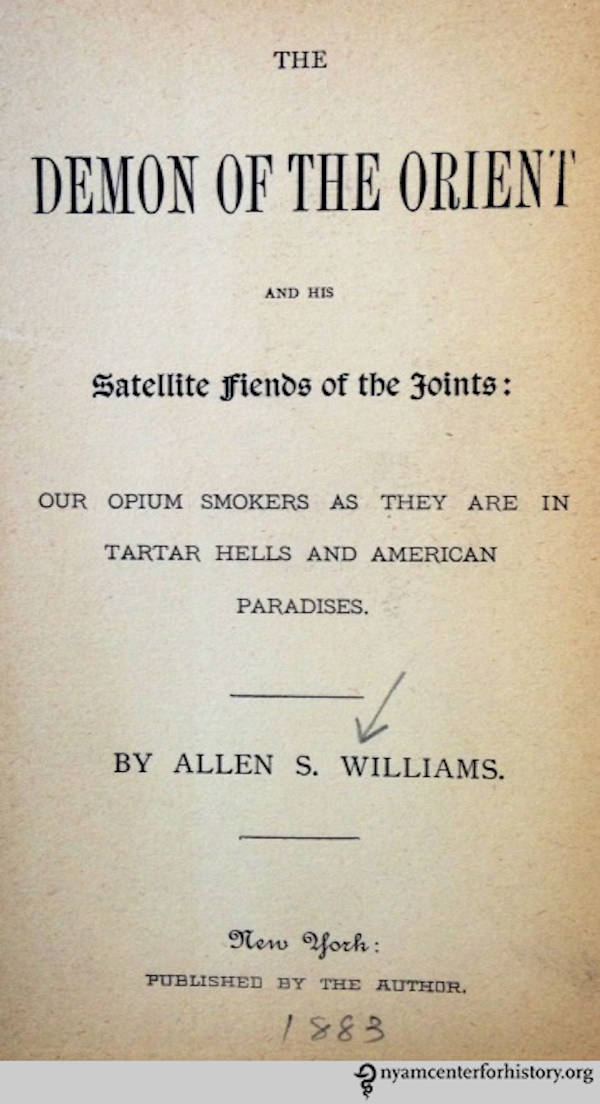
New York Historical SocietyThe title page of Allen S. Williams' The Demon of the Orient and his Satellite Fiends of the Joints book.
The Persistence Of Opium And Other Drugs
Despite the ongoing war on opium dens and the Chinese who were believed to enable this, the drug continued to be used across early 20th-century United States. Indeed, a substantial portion of Americans in major cities such as New Orleans, Chicago, St. Louis, and New York recreationally smoked opium on a regular basis.
Unlike the crack epidemic of the 1980s or the resurgence of heroin in the following decade, opium dens were commonly frequented by both men and women from the upper echelons of America's society. It was not at all unusual to see upper and middle-class citizens stop by a den for a session of euphoric numbness and calm.
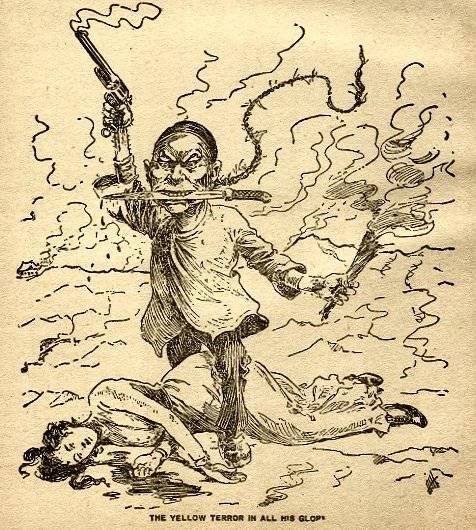
Wikimedia CommonsAnti-Chinese propaganda, depicting an armed, opium-smoking Chinese man.
Despite all the new legislation, opium was clearly still being sold and used. Even when the 1906 San Fransisco earthquake and the subsequent fire laid waste to most of the city's opium establishments, the drug still flourished. This encouraged the U.S. government to only further intensify their raids and arrests.
What the laws did do, however, was shift the trade of the substance into the hands of criminal elements, much like the case with the current war on drugs. To make matters worse, they also encouraged the use of new, stronger drugs, such as morphine and cocaine, which skirted around the laws and bans.
In 1914, the U.S. government responded with the Harrison Narcotics Tax Act which banned all non-medical uses of not just opium, but also morphine and cocaine. In the coming decades, more drugs were added to the list of prohibited substances including the ever-popular cannabis plant, setting the scene for the modern war on drugs.
The Decline Of Opium Dens
Ultimately, it wasn't so much legislation as shifts in culture that spelled the end of opium's popularity. By the time World War II loomed on the horizon, frequenting dens and consuming the drug, in general, was on a nationwide decline. One particular opium den on 295 Broome Street in Manhattan, stayed in business until 1957, but this was an anomaly.
The United States and the rest of the Western world had moved on from this exotic, "Orient" vice. Americans were now firmly entrenched in social circles and establishments dealing in liquor, beer, and cigarettes.
All we have now are old photographs and scarce first-hand accounts of what it was like to sit in a nondescript den in America's Chinatowns and let the opium take hold — but maybe that's for the better.
After going inside the opium dens of the Victorian era, check out these photos of New York's turn-of-the-century immigrant slums. Then, have a look at these images by renowned journalist Frank Carpenter of people around the world at the turn of the 20th century.
